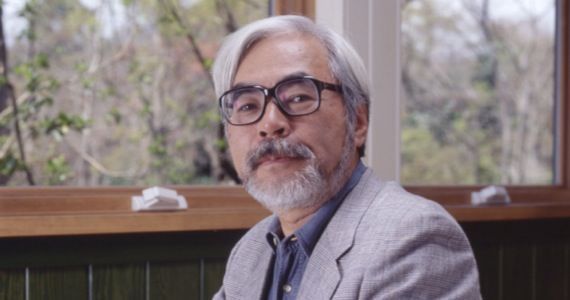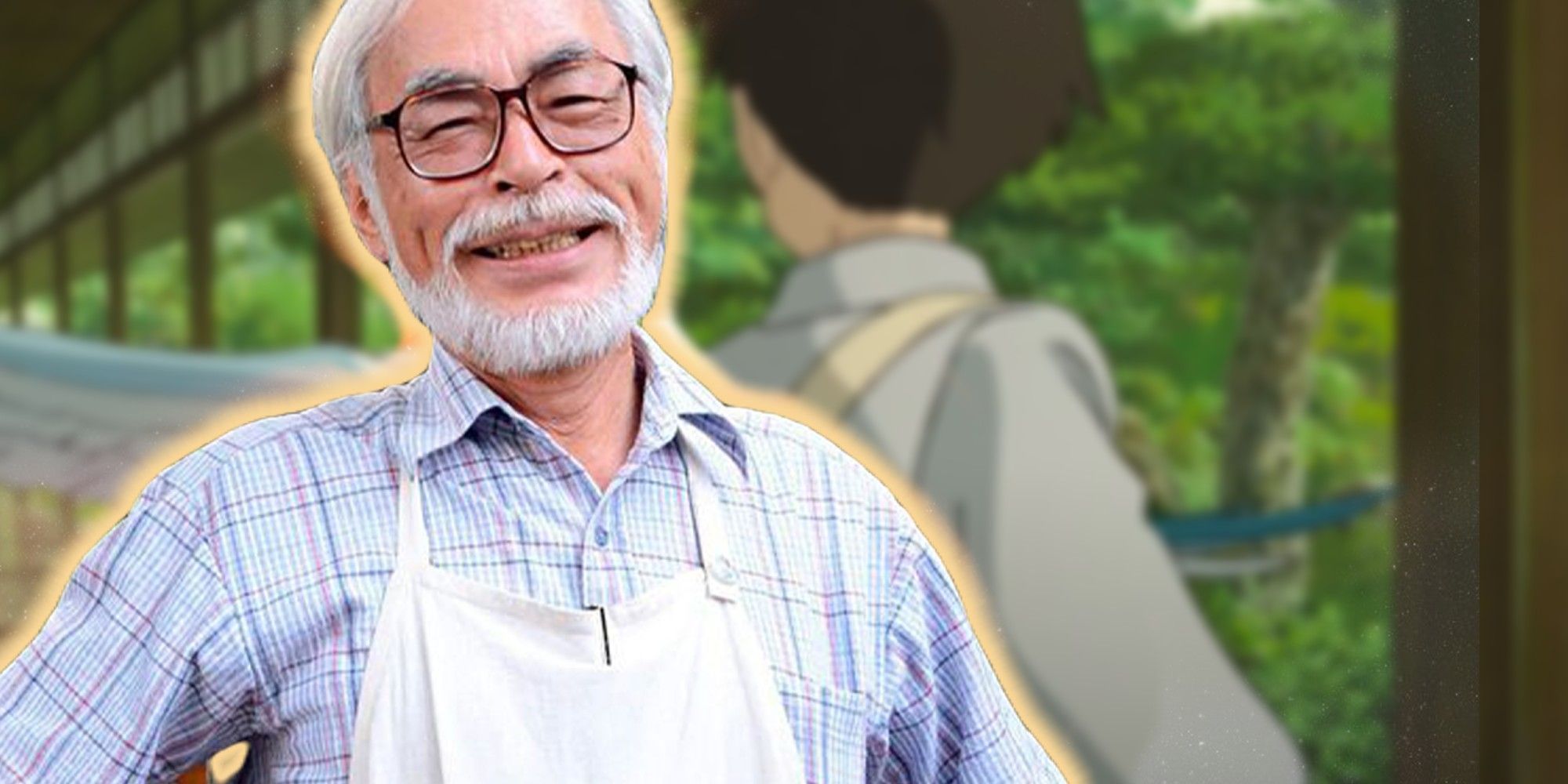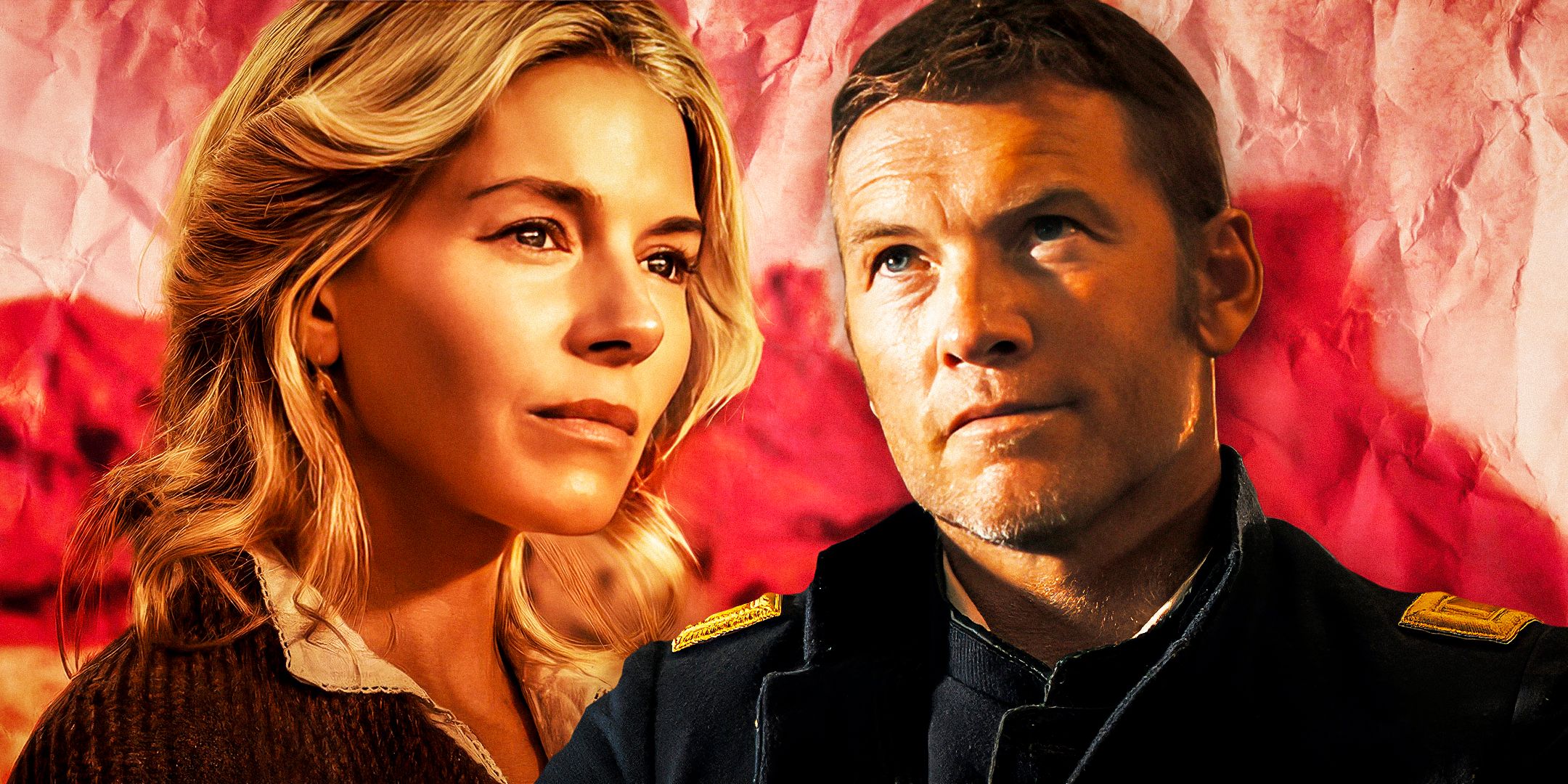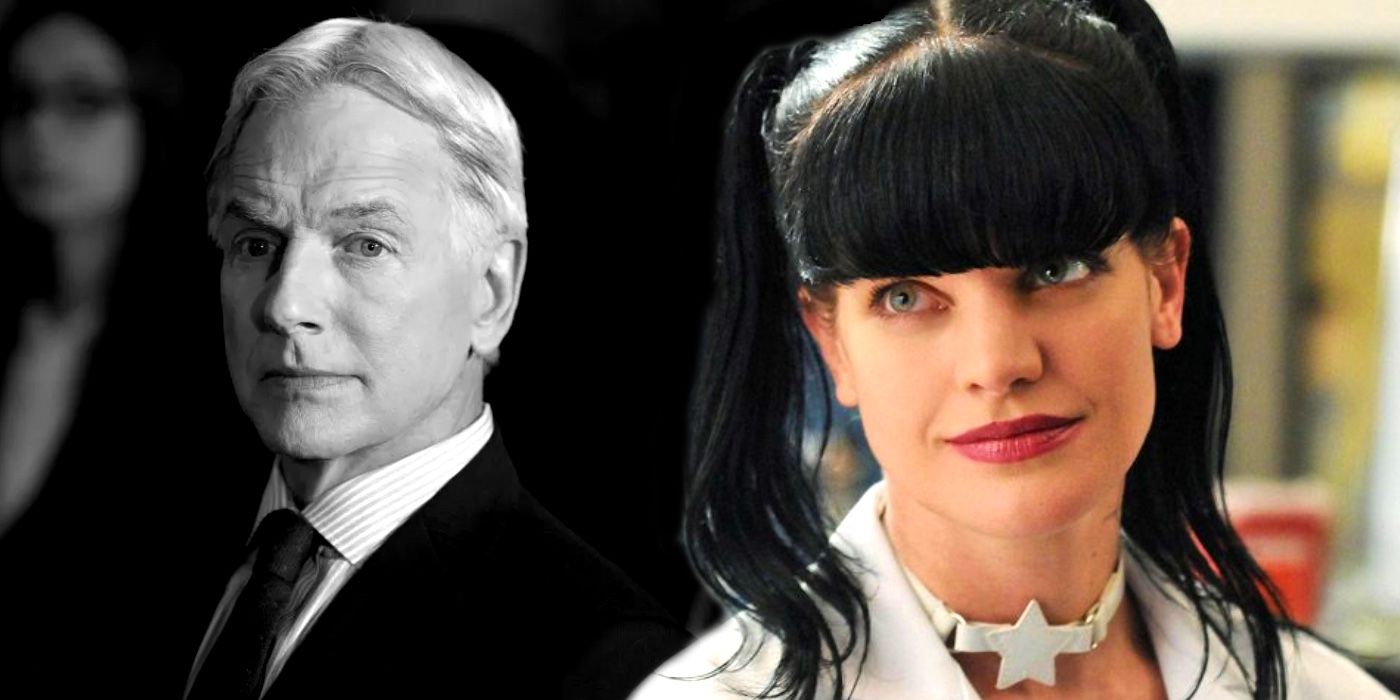Quick Links
- “Over here is the chest I keep my hopes and dreams in. It’s empty.”
- “I asked her to marry me. Can’t back out.”
- “Most of our world is rubbish.”
- “Problems begin the moment we’re born. We’re born with infinite possibilities, only to give up on one after another.”
- “If life’s hassles disappeared, you’d want them back.”
- “I can feel it every day, the limit of my ability.”
- “The future is clear. It’s going to fall apart.”
- “Modern life is so thin and shallow and fake. I look forward to when developers go bankrupt, Japan gets poorer, and wild grasses take over.”
- “You must push yourself until your nose starts bleeding.”
- “Filmmaking only brings suffering. Can’t believe I actually want to do another one.”
Hayao Miyazaki, co-founder of the world-renowned Japanese animation studio, Studio Ghibli, is known for some of the most beloved films in children’s media. Films such as Spirited Away, Porco Rosso, and The Secret World of Arietty put Studio Ghibli on the map, loved by audiences of all ages for their escapism, creative ingenuity, and heart-driven stories. However, some fans may be surprised to discover that the man behind these stories is not quite what one would expect.
After graduating from Gakushūin University in 1963, Miyazaki received an entry-level position at Toei Animation. During his time at Toei Studios, he met those who would soon be his lifelong partners: Takahata Isao, a future co-founder of Studio Ghibli, and Ōta Akemi, Miyazaki’s soon-to-be wife. The 83-year-old director was recently awarded a position on TIME Magazine’s list of 100 Most Influential People for 2024.

The Boy and the Heron, Miyazaki’s autobiographic project that brought him out of retirement, earned Miyazaki his second Academy Award. While some may say that the artist resembles their art, Miyazaki proves to be a bit of a conundrum. In a few of his most iconic (and sometimes chaotic) quotes throughout his career, he continues to bewitch viewers with his dark, witty humor and artistic genius, making him impossible not to love.
10
“Over here is the chest I keep my hopes and dreams in. It’s empty.”
One of the Main Themes of Studio Ghibli’s Films Is the Reminder to Keep Dreaming
Fantastical landscapes and child-like wonder allow audiences of all ages to escape reality as they follow loveable protagonists on thought-provoking adventures. Whisper of the Heart is an underrated Ghibli movie that wasn’t actually directed by Miyazaki. Released in 1995, it stars Shizuku, a young girl and avid reader who dreams of becoming a writer when she grows up. After discovering a boy named Seiji Amasawa has once taken out each of her borrowed library books, she embarks on a journey of self-discovery to find the young boy, who could very well be her soulmate.
This darkly humorous, yet playful quote from Miyazaki is quite contrasting to his life’s work. Based on the manga of the same name, Whisper of the Heart and many others of Ghibi’s work have strong underlying themes of exploring the unknown and chasing one’s dreams. Furthermore, it would seem that one of Studio Ghibli’s co-founders, of all people, would consider themselves full of dreams, considering the quantity and quality of their creative endeavors over the years.
9
“I asked her to marry me. Can’t back out.”
Miyazaki’s Films Often Contain a Romantic Subplot
From the anti-war themes and tragic death of one of the film’s leads, The Wind Rises is known as one of Studio Ghibli’s most controversial stories. The 2013 feature follows Jiro Horikoshi, a near-sighted boy who wishes to become a pilot. In his dreams, he is visited by Count Caproni, an Italian aircraft pioneer, who encourages him to hone his skills in engineering. During a summer vacation, he reconnects with an old friend, Naoko, whom he falls in love with and plans to marry.
Features such as Howl’s Moving Castle, Spirited Away, and Kiki’s Delivery Service all hint at a deeper relationship between their protagonists. However, none can compare to the heartbreaking tragedy of Jiro and Nahoko’s story. Jiro expresses his feelings to Naoko, who has recently been diagnosed with tuberculosis. She insists on waiting until she is cured before they get married, but she soon succumbs to the illness. The innocently captivating romances that often spark between Studio Ghibli’s leading men and ladies may lead fans to believe that Miyazaki himself is a romantic, but hilariously relatable quotes such as this prove quite the opposite.
8
“Most of our world is rubbish.”
Studio Ghibli’s Films Are Much More Profound Than Fans Realize
While some of Miyazaki’s quotes starkly contrast the feelings his films evoke in audiences of differing ages, backgrounds, and cultures, some are perfect examples of what makes his stories so unique. Set in the 14th century, Princess Mononoke, one of Ghibli’s most well-known and beloved stories, follows Ashitaka, who seeks a cure for an animal attack from a forest god, Shishigami. On his journey, he witnesses the destruction that humans have caused in the forest that sparked the wrath of the wolf-god Moro and his human companion, Princess Mononoke.
However, in an attempt to harbor peace between the princess and the humans, he only brings more conflict. Film and television aimed at younger audiences in the United States have often become a cash grab. Meaningful stories are traded for endless, unoriginal sequels and remakes, while plots and characters lack depth. However, Studio Ghibli’s storytellers prove time and time again that complex themes and real-world problems, such as the protection of earth, nature, and wildlife, can be tackled in children’s media, and Princess Mononoke is a prime example.
7
“Problems begin the moment we’re born. We’re born with infinite possibilities, only to give up on one after another.”
Studio Ghibli Fans Can Agree That Their Films Inspire Audiences to Expand Their Horizons
Discussing real-world issues from a new perspective in a fantasy-like environment can enable viewers to escape reality and return with fresh minds and ideas of new possibilities. However, not all of Miyazaki’s films end on a happy note. Porco Rosso, set in Italy in the 1930s, follows a former World War I flying ace, who was somehow turned into a pig during the war, as he prepares to battle a crew of sky-pirates who have been terrorizing wealthy cruise ships.
After a grueling battle, Porco Rosso succeeds in his mission. Before the credits roll, Madame Gina gives him a choice: before he leaves for good, he can meet her at their favorite spot, a gazebo overlooking the ocean, thus finally admitting his feelings for her. However, the gazebo is left empty as the roar of his plane is heard in the distance. Once again, Miyazaki surprises audiences by providing a thoughtful and realistic ending to one of his most underrated films. Falling victim to the reality of his exterior, Porco Rosso refuses to believe in the possibility of love despite the efforts of Madame Gina.
6
“If life’s hassles disappeared, you’d want them back.”
The Complicated Theme of Finding Beauty in the Difficulty of Life
A mild-mannered hat-maker, Sophie Hatter, befriends Howl, who dwells in a magical flying castle run by Calcifer, a fire demon. In a twist of fate, after releasing Sophie from a curse onset by the Witch of the Waste, Howl discovers that she is the girl he has been searching for since childhood. In turn, Sophie helps him find his heart, which results in one of the film’s most beloved lines:
“A heart’s a heavy burden.” – Sophie Hatter
Many of Studio Ghibli’s films tackle complicated and often heartbreaking stories. Most notably, Grave of the Fireflies and From Up on Poppy Hill. However, in Howl’s Moving Castle, Miyazaki reminds audiences that some of life’s challenges are what make it worth living. As Howl gains his heart back after so many years, he remarks on the weight of it in his chest. Sophie reminds him that the things that make one feel the deepest are the things most worth holding onto.
5
“I can feel it every day, the limit of my ability.”
Many Artists Can Relate to Miyazaki’s Struggles
Another common theme throughout some of Studio Ghibli’s most heartbreaking projects is illness. The Wind Rises loses one of its female protagonists to tuberculosis. Furthermore, while the Japanese version provides no clear indication of whether the protagonist survives, The Secret World of Arietty discusses the sober reality of childhood medical difficulties. Arietty, a tiny teenager, lives within the crevices of a suburban home, where she meets Shōn, a 12-year-old boy with a heart condition.
Just as Shōn leaves for his surgery, Arietty and her family must leave their home forever. While the Japanese version of the film does not answer whether Shōn survived, the English version added a monologue at the end narrated by him many years in the future, indicating he survived his procedure. Nevertheless, despite the fairytale-like settings of his films, Miyazaki often includes a sense of somber realism, like the limiting effects of the human condition on his protagonists and their dreams.
4
“The future is clear. It’s going to fall apart.”
The Grave of the Fireflies Is Known as Studio Ghibli’s Most Devastating Movie
Even though the film is set during World War II, its themes of human destruction still ring true today. Continuing with Miyazaki’s controversial anti-war themes, The Grave of the Fireflies tells the story of Seita and Setsuko following the American firebombing during the Second World War, which separated them from their parents. Driven by nothing more than a desperation for survival, Miyazaki’s most sorrowful tale follows their struggles to stay together and stay alive.
It is rare for Studio Ghibli’s films to end on anything other than a happy note, but The Grave of the Fireflies is not one of them. In the end, Seita and Setsuko die of starvation. Alone at a train station, the two children are made victims of one of the world’s most horrific conflicts. While some Studio Ghibli fans may think that Miyazaki’s films are nothing more than light-hearted escapist tales of grandeur, the director proves through his perceptions of the real world that this is far from the truth.
3
“Modern life is so thin and shallow and fake. I look forward to when developers go bankrupt, Japan gets poorer, and wild grasses take over.”
Miyazaki’s Love for Nature Is Evident in Many of His Films
No matter the plot, each Ghibli story seems to take place in a green, luscious landscape, complete with loveable nature spirits and sprites. Spirited Away is one of Studio Ghibli’s most aesthetically pleasing films. A 10-year-old girl, Chihiro, goes into the spirit realm located in an abandoned amusement park. After her parents are turned into giant pigs, the young protagonist joins Haku, a river spirit, in trying to save them by working in a resort for supernatural beings.
Amongst the soot sprites and radish spirits, Chihiro manages to subdue No Face, travel to Swamp Bottom in the dead of night, and outsmart Yubaba’s petty tricks. She discovers her true capabilities and explores the beauty of the spirit realm, as well as her new home. Through Miyazaki’s films, which contain forever relevant themes, audiences of all ages can reconnect with nature and the child-like wonder that lives within by diving into the earthy sceneries of Studio Ghibli.
2
“You must push yourself until your nose starts bleeding.”
Kiki’s Delivery Service Reminds Young Creatives to Keep Pushing for Their Dreams
Studio Ghibli’s movies aren’t only good for entertainment value, they contain excellent life lessons. Released in 1989, Kiki’s Delivery Service follows the story of a young witch who leaves home for a mandatory year of independence to discover her magical skills. During her time away, Kiki begins an air courier service for a quaint seaside town. All is well with Kiki and her business until it starts to interfere with her personal life.
While making deliveries, the young witch misses out on a party with her new friend, Tombo. The burden of responsibility begins to weigh heavily on her. She traveled to the city to develop her talents, but the harsh realities of self-sufficiency caused her to lose passion. As a result, she is drained by the very thing that defined her. Soon, Kiki finds solace in Ursula, a local painter, who helps her understand that passion comes from within. Miyazaki films such as Kiki’s Delivery Service encourages artists and people of all passions to continue to push toward their dreams against all odds.
1
“Filmmaking only brings suffering. Can’t believe I actually want to do another one.”
Miyazaki Has Threatened to Retire Four Different Times Throughout His Career
Hayao Miyazaki has teased retirement time and time again. First, in 1997 following Princess Mononoke; again in 2001, after Spirited Away; once more in 2014 after The Wind Rises; and finally, in 2023, around the release date of his most recent film, The Boy and the Heron. Miyazaki gives fans quite a scare after each retirement announcement, but after four fake-outs, it is clear that the director isn’t going anywhere.
Coming out of retirement once again to spearhead his most personal film, Miyazaki won Studio Ghibli a Golden Globe and a BAFTA Award for Best Animated Motion Picture and won an Oscar for Best Animated Feature at the 2024 Academy Awards. The Boy and the Heron introduces themes such as familial responsibility, which were speculated to be aimed towards his son as an apology. Considering the heavy topics of his most recent masterpiece, it is evident why filmmaking would be such a challenging process for Miyazaki. However, Studio Ghibli fans can agree that many are thrilled the creative director is here to stay.

While some artists create pieces that are reflections of themselves, Miyazaki challenges this assumption by creating art not of this world but one that could be. Through Studio Ghibli’s storytelling, audiences can escape their troubles for just a moment, be inspired, and return to make their reality a better place. Perhaps it is for this reason that Hayao Miyazaki continually returns to his drawing board to craft yet another masterpiece despite his self-proclaimed suffering in the filmmaking process.



